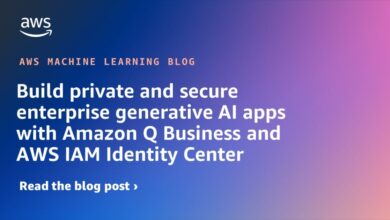Can Generative AI Solve The Data Overwhelm Problem?

Can Generative AI Solve The Data Overwhelm Problem?
Data is arguably the most valuable asset for today’s businesses. This means it’s vital that people across the organization are able to work with data and extract insights – insights that (hopefully) lead to better, more informed decisions across the organization.
But all that’s easier said than done. Because, rather than being empowered by data, many people find themselves intimidated (or even paralyzed) by it.
How Bad Is The Data Overwhelm Problem?
In a world that’s full of data – where everything we do generates data – the sheer volume of data that’s available to the average business can become overwhelming. This phenomenon is described by software leaders Oracle as the “Decision Dilemma.” You could also call it “decision paralysis” or “data anxiety.” Whatever you call it, the basic gist is that more data causes anxiety and lack of action instead of better decisions.
For its Decision Dilemma report, Oracle surveyed more than 14,000 employees and business leaders across 17 countries, and the results were eye-opening:
· 83 percent agreed that access to data is essential for helping businesses make decisions, BUT…
· 86 percent said that data makes them feel less confident and
· 72 percent said that data has stopped them from being able to make a decision.
At the same time, three-quarters of business leaders say the daily volume of decisions they need to make has increased tenfold over the last three years. More decisions to make, but less confidence in making them despite masses of data at our fingertips? This is a potential crisis for business leaders.
Could generative AI help to solve this crisis? Judging by generative AI’s ability to make sense of data and extract useful information – and the fact that generative AI capabilities are already being built into analytics tools – the answer appears to be yes.
What Can Generative AI Do?
How exactly can generative AI be used to interpret data? Use cases include:
· Driving faster and better decision making through better insights: Through real-time tracking of data, decision makers can gain a better grasp of what’s happening across the business and be presented with actionable insights. And this can be achieved through natural language prompts, such as “What are our top three customer behavior trends this month?”
· Acting as a decision-making co-pilot: Thanks to generative AI’s conversational abilities, these tools can function as virtual advisors – a sounding board to help discuss and generate ideas.
· Generating summaries of data: Generative AI can sift through vast quantities of data and create executive summaries that pull out the key points, along with best-practice recommendations.
· Visualizing data: Generative AI can generate analytics reports in an easy-to-digest format – presenting insights from the data not just as text narratives but also in a visual format (graphs, charts, etc.).
· Automating data analytics: Generative AI can potentially automate the data analysis process and provide automatic notifications for, well, anything you want. Spikes in sales, trending website activity, a drop in factory machine performance, increased sick leave, you name it…
· Harnessing predictive capabilities: As well as understanding what’s going on in the business right now, generative AI can help decision makers pre-empt what might be coming down the line.
· Using synthetic data to test ideas and scenarios: By creating large amounts of synthetic data that mimic real-world data, leaders can model scenarios that may be difficult to model with real-world data (for example, because an event is a rare, but impactful occurrence, or because gathering that much data would be difficult and expensive).
· Preparing data: Generative AI can also be used to take care of data preparation tasks such as tagging, classification, segmentation, and anonymization.
· Helping to clean up data for better analysis results: Because generative AI is so good at spotting patterns, it can be used to detect anomalies and inconsistencies in your data – things that could potentially skew results.
Another advantage is that generative AI can, in theory, work with all sorts of messy, unstructured data, including photos and video data, customer feedback comments, and social media posts – meaning, it isn’t just limited to neatly structured data in databases.
Best of all, these incredible capabilities make data much more actionable for decision-makers across the organization – regardless of their data expertise. So, you don’t need to be a data expert to harness data in your everyday work. Decision paralysis, begone!
Look Out For Generative AI-Powered Tools
Providers of analytics software and platforms are beginning to build generative AI functions into their tools to enable more intelligent data analytics. For example, tools such as Microsoft Power BI, Teradata VantageCloud, Tableau AI, and Qlik Cloud now incorporate generative AI capabilities. This generally allows for natural language querying of data, easy summaries, tailored reports, and more.
What we’re seeing, then, is a democratization of generative AI and data. This will help to level the playing field between large corporations and smaller enterprises because you no longer need an army of data scientists to gain a competitive advantage.
We urgently need people to become more confident and competent at working with data. I believe generative AI will help to achieve this vision and solve the data overwhelm problem – by giving anyone the ability to analyze vast amounts of data in a more intuitive way. In other words, all you need to do is ask the right questions!
Read more about generative AI and its impact in my new book, Generative AI in Practice, 100+ Amazing Ways Generative Artificial Intelligence Is Changing Business And Society.



